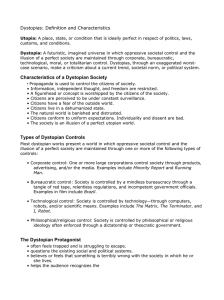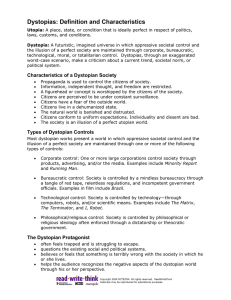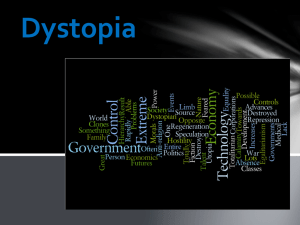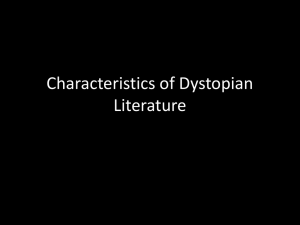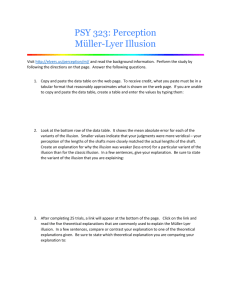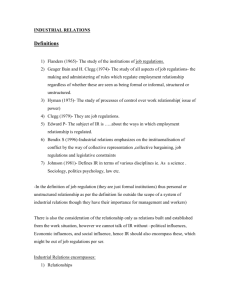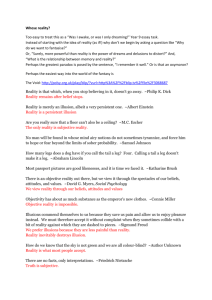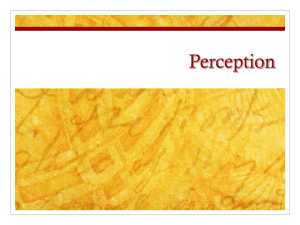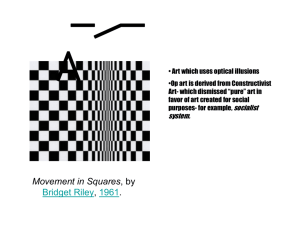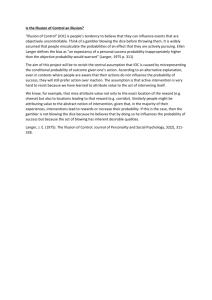dystopian_intro - Mr. Straatsma`s Blog
advertisement
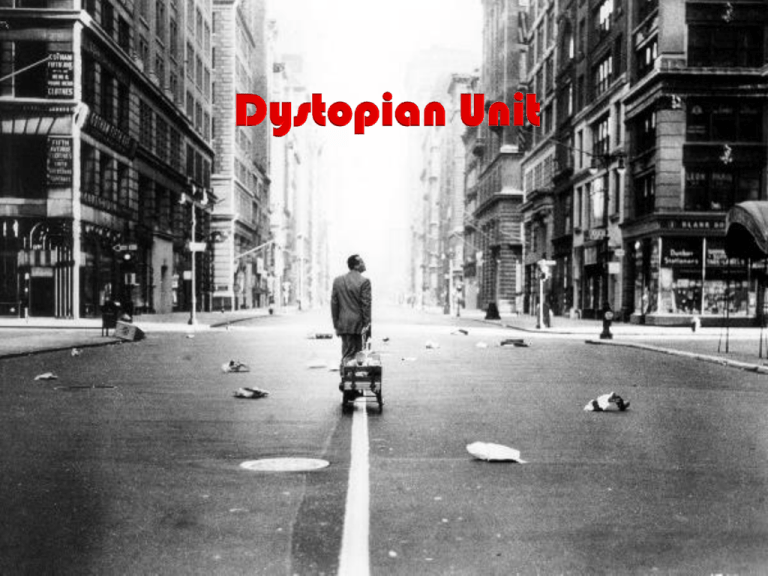
A place, state, or condition that is ideally perfect in respect of politics, laws, customs, and conditions. • A futuristic, imagined universe in which oppressive societal control and the illusion of a perfect society are maintained. Dystopias, through an exaggerated “worst-case” scenario, make a criticism about a current trend, societal norm, or political system. 1. Propaganda is used to control the citizens of society. 2. Information, independent thought, and freedom are restricted. 3. A figurehead or concept is worshipped by the citizens of the society. 4. Citizens are perceived to be under constant surveillance. 5. Citizens have a fear of the outside world. 6. Citizens live in a dehumanized state. 7. The natural world is banished and distrusted. 8. Citizens conform to uniform expectations. Individuality and dissent are bad. 9. The society is an illusion of a perfect utopian world. Most dystopian works present a world in which oppressive, societal control and the illusion of a perfect society are maintained through one or more of the following types of controls: One or more large corporations control society through products, advertising, and/or the media. Examples include Minority Report and Running Man. Society is controlled by a mindless bureaucracy through relentless regulations and incompetent government officials. Society is controlled by technology— through computers, robots, and/or scientific means. Examples include The Matrix, The Terminator, and I, Robot. Society is controlled by philosophical or religious ideology often enforced through a dictatorship or theocratic government. • Often feels trapped and is struggling to escape. • Questions the existing social and political systems. • Believes or feels that something is terribly wrong with the society in which he or she lives. • Helps the audience recognizes the negative aspects of the dystopian world through his or her perspective. http://www.aclu.org/pizza/images/screen.swf
